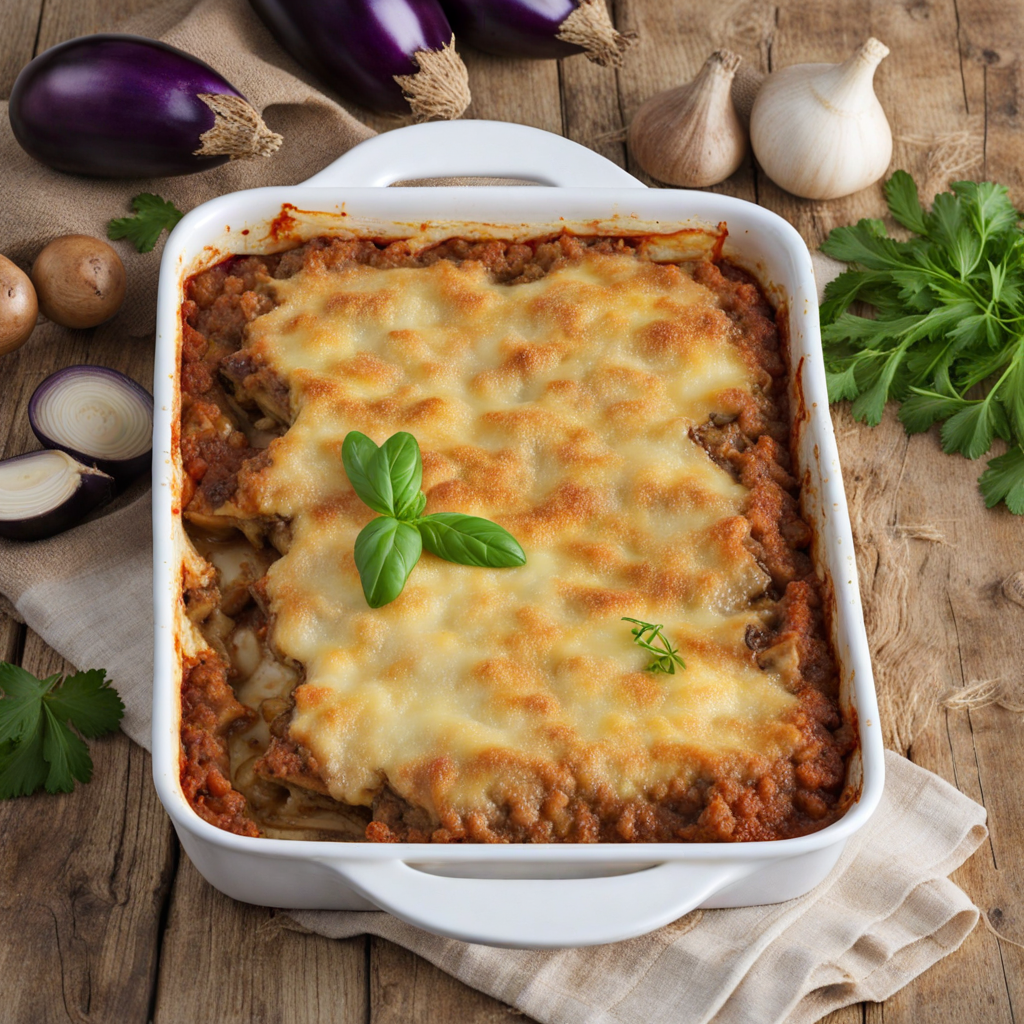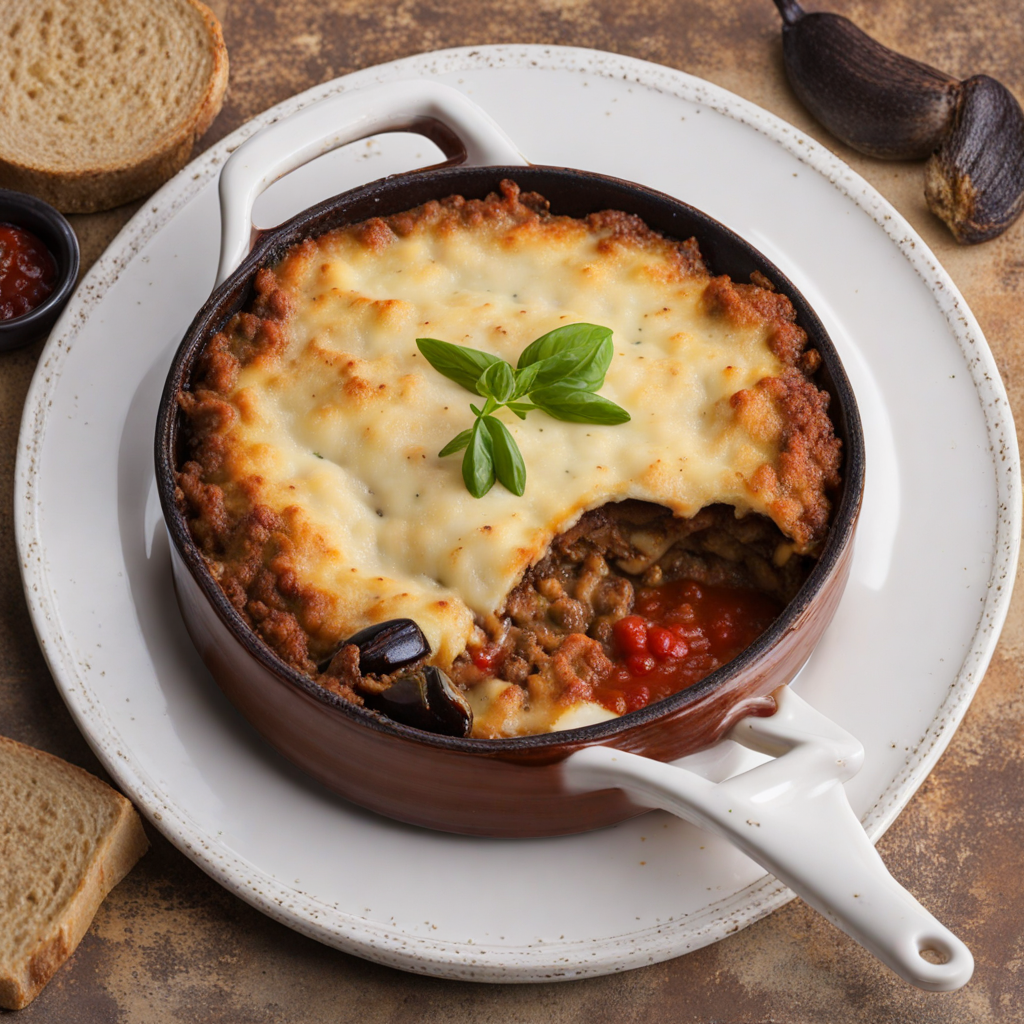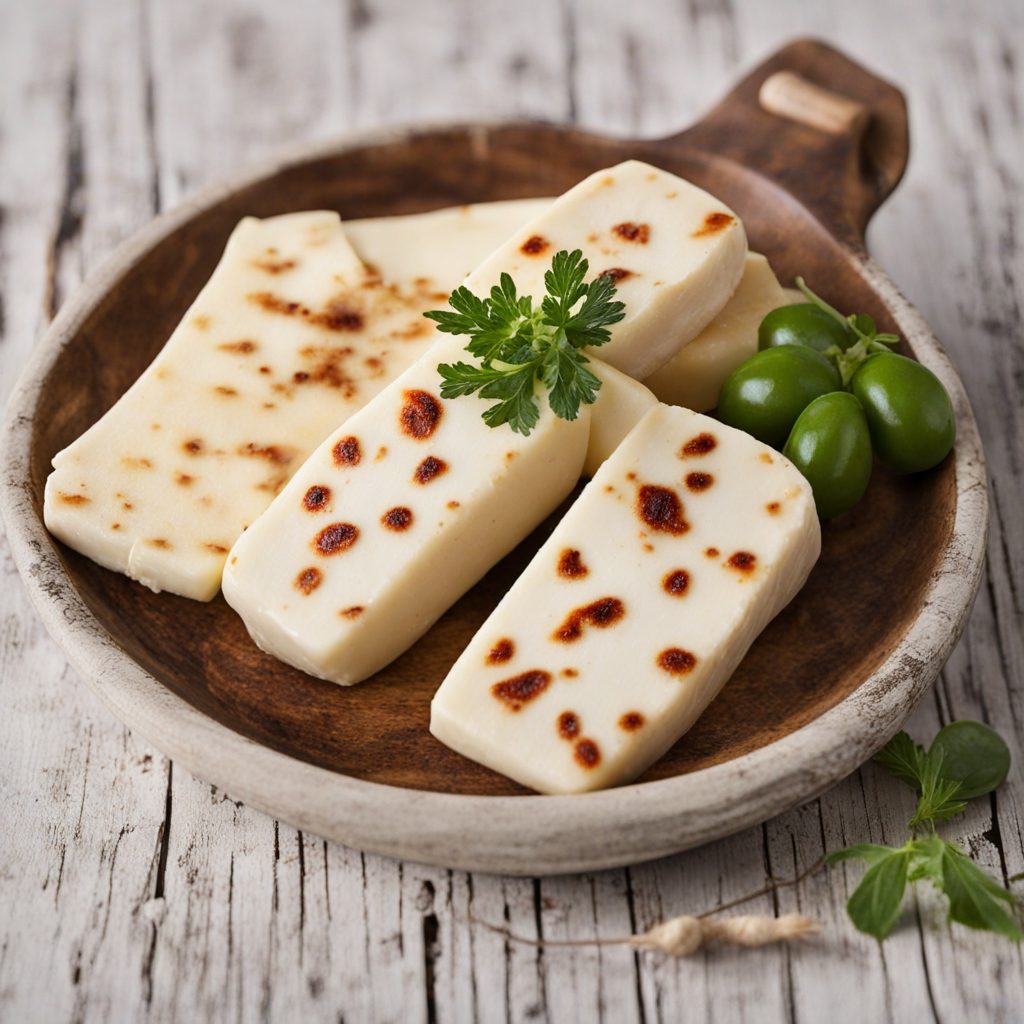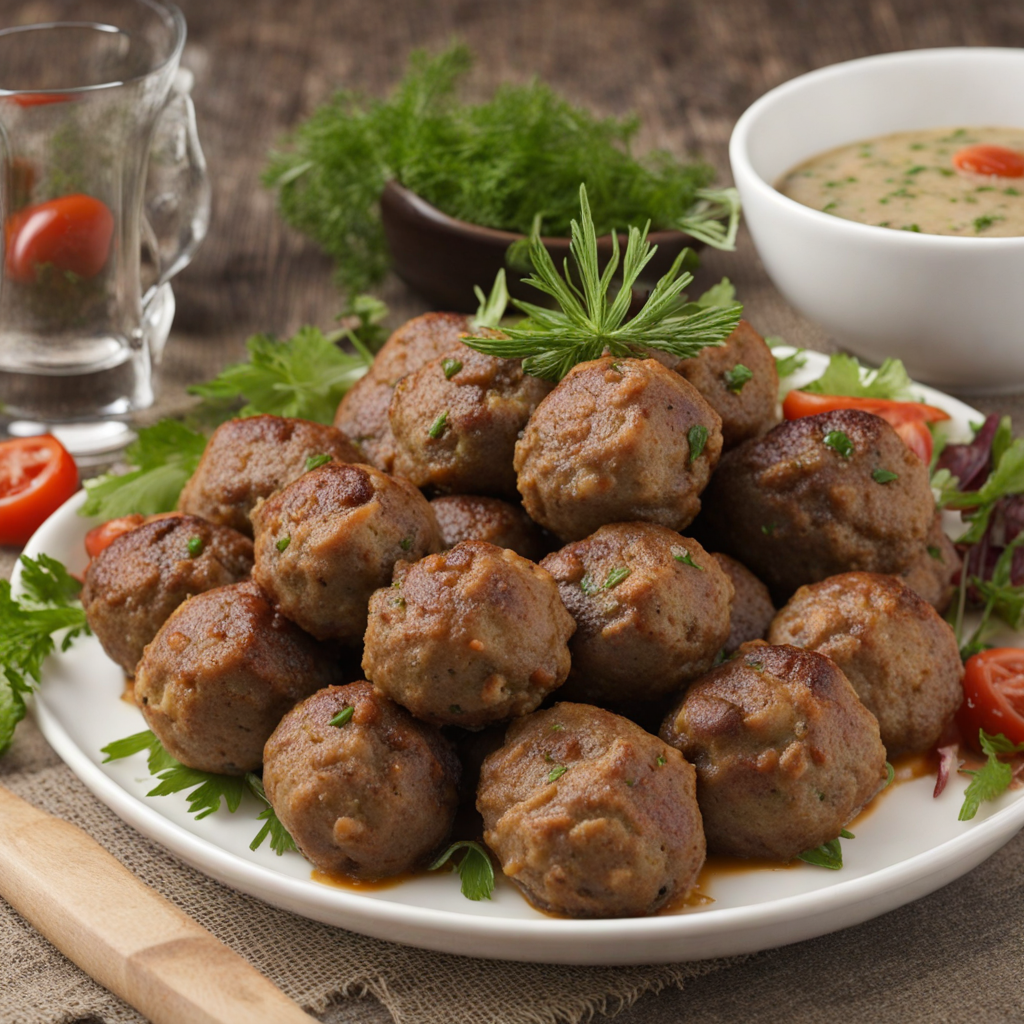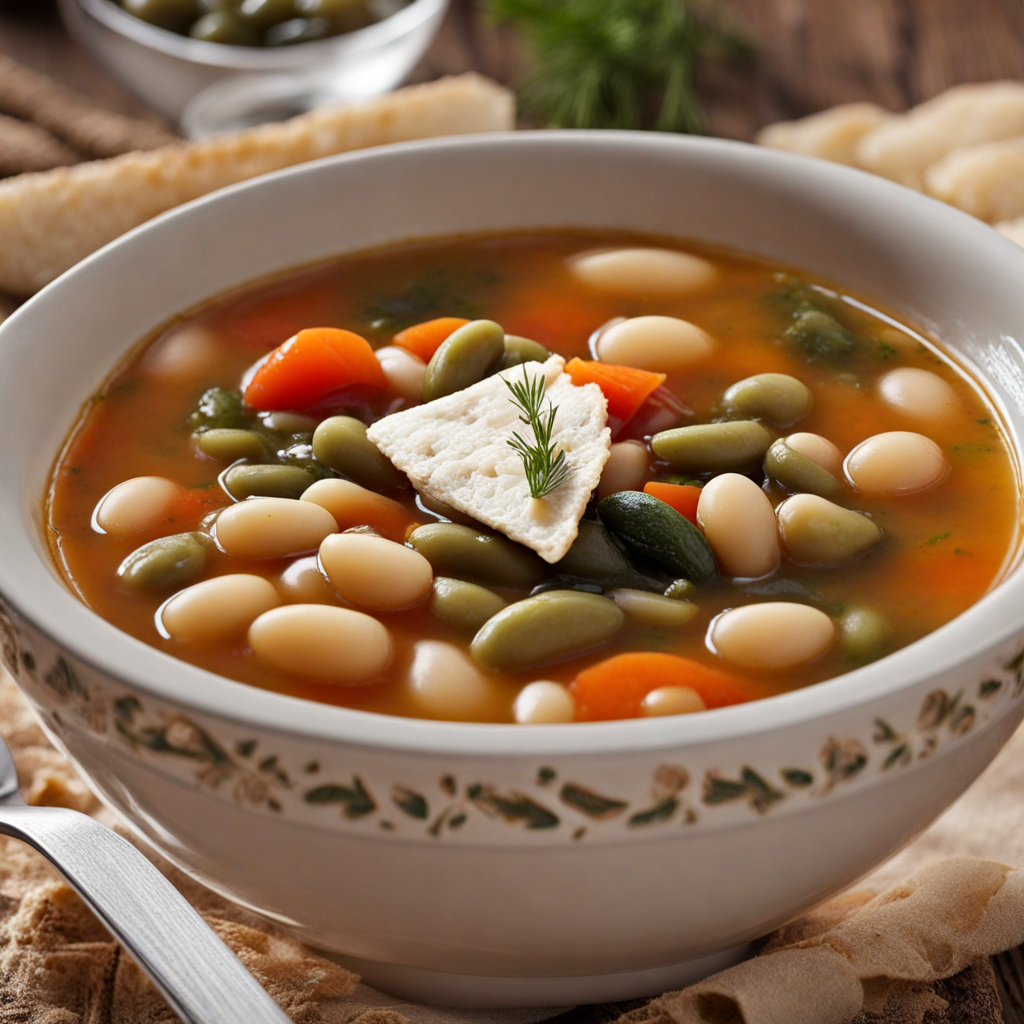Moussaka
Moussaka is a traditional Cypriot dish that embodies the rich culinary heritage of the Mediterranean. It is a layered casserole that typically features a combination of tender eggplant, spiced ground meat (often lamb or beef), and a creamy béchamel sauce. The eggplant is usually sliced and either grilled or fried until it reaches a golden-brown color, adding a smoky depth to the dish. The meat is sautéed with aromatic spices such as cinnamon, nutmeg, and allspice, which infuse the filling with a warm, inviting flavor. This delightful medley of ingredients is then assembled in layers, creating a beautiful and hearty meal that’s perfect for sharing. What sets Cypriot moussaka apart from its Greek counterpart is the addition of potatoes, which are often included as the base layer. These thinly sliced potatoes not only provide a satisfying texture but also absorb the flavors of the meat and spices, enhancing the overall experience. Each layer is generously seasoned, making every bite a burst of flavor. The final touch is the rich béchamel sauce, which is poured over the top and baked until it forms a luscious golden crust. The result is a comforting dish that is both hearty and indulgent, perfect for family gatherings or festive occasions. The experience of enjoying moussaka goes beyond just taste; it's about the warmth of shared meals and the love that goes into its preparation. Traditionally served piping hot, this dish is often accompanied by a fresh salad or crusty bread, allowing diners to savor every layer with each forkful. Moussaka is not just a meal; it’s a celebration of Cypriot culture, making it a must-try for anyone looking to explore new flavors and culinary traditions.
How It Became This Dish
The Culinary Journey of Μουσακάς (Moussaka) in Cyprus Introduction Moussaka, a dish that evokes images of sun-drenched Mediterranean landscapes and bustling markets, is often associated with Greek cuisine, but its roots and evolution are much more intricate, particularly in Cyprus. This layered casserole, primarily made with eggplant, minced meat, and béchamel sauce, tells a story of cultural exchange, historical influences, and regional variations that span centuries. Origins and Historical Context The origins of moussaka can be traced back to ancient times, with its precursor possibly being the Roman dish "patina." The concept of layering ingredients and baking them has been prevalent across various Mediterranean cultures. However, the modern interpretation of moussaka emerged in the Ottoman Empire, which spanned much of Southeast Europe, the Middle East, and North Africa. The name 'moussaka' is derived from the Arabic word "musaqqa'a," meaning "chilled" or "cold," indicative of how early versions of the dish were served. In Cyprus, the dish began to take shape during the Ottoman period (1571-1878), when Greek and Turkish culinary traditions began to intermingle. The island was a melting pot of cultures, and the introduction of new ingredients and cooking methods played a crucial role in developing moussaka into the beloved dish it is today. Cultural Significance Moussaka holds a special place in Cypriot culture, often serving as a symbol of hospitality and communal dining. Traditionally, it is prepared during special occasions—weddings, religious celebrations, and family gatherings. The process of making moussaka is labor-intensive, requiring time and attention to detail, which reflects the care and love put into the dish. In Cyprus, moussaka is not merely food; it embodies a sense of togetherness. Meals are an opportunity to share stories, celebrate heritage, and strengthen familial ties. The act of preparing moussaka often involves multiple generations, with recipes being passed down from mothers to daughters, preserving the culinary wisdom of the past. Ingredients and Regional Variations The core ingredients of Cypriot moussaka typically include eggplant, minced meat (often lamb or beef), tomatoes, potatoes, and a creamy béchamel sauce. However, like many dishes influenced by diverse cultures, regional variations exist. In some versions, potatoes are layered at the bottom, while in others, they may be omitted altogether. Cypriots also often incorporate local spices, such as cinnamon and allspice, which lend a unique flavor profile to the dish. The use of locally sourced ingredients, such as fresh vegetables and high-quality olive oil, enhances the authenticity of moussaka. Additionally, the dish can be found in vegetarian variations, substituting the meat with lentils or chickpeas, reflecting the growing trend towards plant-based diets. Evolution Over Time As Cyprus transitioned through various political and cultural eras, so too did its culinary landscape, including moussaka. The British colonial period (1878-1960) introduced new cooking methods and ingredients, further influencing traditional recipes. While some Cypriots embraced these changes, others remained steadfast in their dedication to authentic, time-honored practices. In the late 20th century, the globalization of cuisine began to shape how moussaka was perceived and prepared, especially with the advent of the internet and international travel. Chefs started experimenting with fusion variations, incorporating ingredients like zucchini, different types of cheeses, and even adaptations to cater to vegan diets. This flexibility allowed moussaka to maintain its relevance in a rapidly changing food landscape. Despite its adaptations, the essence of moussaka—a hearty, comforting dish—remains intact. In Cyprus, it continues to be a staple in both home kitchens and restaurants, with each cook adding their personal touch to the recipe. Moussaka in Modern Cypriot Society Today, moussaka is celebrated not only as a traditional dish but also as a culinary ambassador for Cyprus. Restaurants and tavernas across the island proudly feature it on their menus, often accompanied by local wines, demonstrating the island's rich agricultural heritage. In recent years, food festivals celebrating Cypriot cuisine have also elevated moussaka's status, showcasing it to both locals and tourists. Moreover, the dish has found its way into cookbooks and culinary shows, where chefs emphasize the importance of using fresh, local ingredients. This resurgence in traditional cooking methods is part of a broader movement that values sustainability and authenticity in food preparation. Conclusion The journey of moussaka in Cyprus is a testament to the island's rich history and cultural tapestry. From its ancient roots to its modern-day interpretations, this dish embodies the flavors and traditions that define Cypriot identity. As it continues to evolve, moussaka remains a cherished symbol of hospitality, community, and culinary heritage. Whether enjoyed at a family gathering or in a bustling restaurant, moussaka invites everyone to partake in a shared experience. With each bite, one can taste the legacy of centuries of cultural exchange, a reminder that food is not just sustenance—it is a bridge connecting past to present, culture to culture. In Cyprus, moussaka is more than a dish; it is a celebration of life itself.
You may like
Discover local flavors from Cyprus


